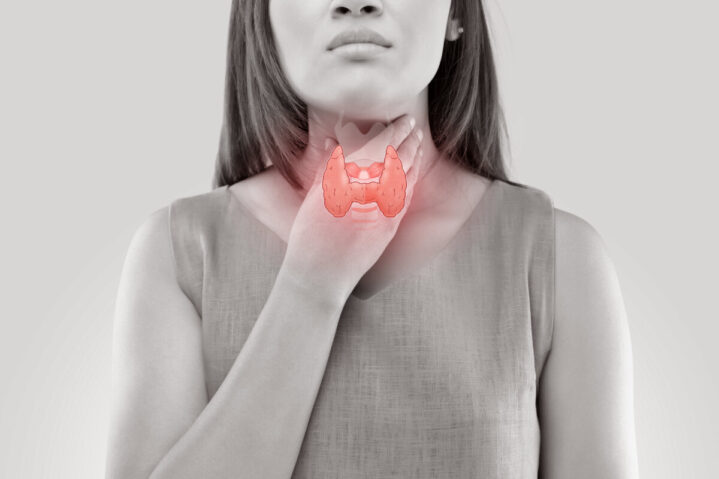
Minimally Invasive Thyroid Surgery

The thyroid gland is a butterfly-shaped organ, composed of the right and left lobe, which is located in the middle of the neck. The thyroid gland is the largest endocrine organ, producing thyroid hormones to regulate the hormonal balance in the body. The common thyroid diseases are hyperthyroidism, hypothyroidism, thyroid goitre and thyroid cancer. Most patients are young women (20-40 years of age) who are still concerned about their cosmesis appearance.
Hence, a thyroidectomy performed through the patient’s mouth which leaves no obvious scar could serve as a treatment alternative to improve their quality of life. Dr. Thanyawat Sasanakietkul, thyroid and parathyroid surgeon at Praram 9 Hospital, explained that thyroid diseases can be categorized as
1) Non-toxic thyroid nodule: A lump is formed in the middle of the neck, which can be easily noticed, as it moves up-downwards when you swallow. This nodule needs to be diagnosed early by ultrasound or needle biopsy to find out whether it is cancer. In the case of thyroid cancer, the patient should get early surgical treatment to prevent lymph node or distant metastasis.
2) Hyperthyroidism: hyperthyroidism results from many causes. For example, Graves’ disease is an autoimmune disorder that leads to the hyperfunctioning of the thyroid. The common symptoms include enlargement of both hormone glands, rapid or irregular heartbeat, fatigue, weight loss and bulging eyes. Hyperthyroidism may also result from the toxic thyroid nodule. Unlike Graves’ disease, toxic adenoma excessively produces hormones, while the thyroid glands themselves are normal. In most cases, toxic adenoma is treated by medication and radioiodine or surgery.

The indications for surgical treatment are suspicious thyroid nodule, swallowing or breathing difficulties, unsatisfactory treatment results of radioactive iodine ablation. At present, the thyroid surgery can be divided into 2 types:
- Conventional open thyroid surgery leaves a 6-8 cm. scar in the middle of the neck. The scar size depends on the nodule size. The surgery is not complicated, does not require special tools in any condition of thyroid disease. However, some patients may be concerned about the obvious scar on the neck, as it could affect the patients’ confidence. Some have to always wear a scarf or blouse with collar to cover the scar.
- Endoscopic thyroidectomy: Thyroid nodule can be removed through many approaches, such as transaxillary breast or transoral (mouth). The minimally invasive thyroid surgery does not leave a visible scar on the neck. In case of transoral endoscopic thyroidectomy, the scar is in the mouth. In addition, the endoscope provides clear vision of the vocal cords and parathyroid glands, not different from open surgery, allowing the treatment of vocal cord to adjust a hoarse voice.
- Transoral endoscopic thyroidectomy can prevent the hoarseness, less postoperative pain and also the patients can probably return to their normal daily life faster. It can be an alternative treatment for hyperthyroidism, nontoxic thyroid nodule and thyroid cancer, if the nodule target does not exceed 6-8 cm. If you notice a lump on your neck, please immediately consult your doctor, so that you have more treatment alternatives. Your physician will consider the most proper surgery type for the optimal treatment result.



